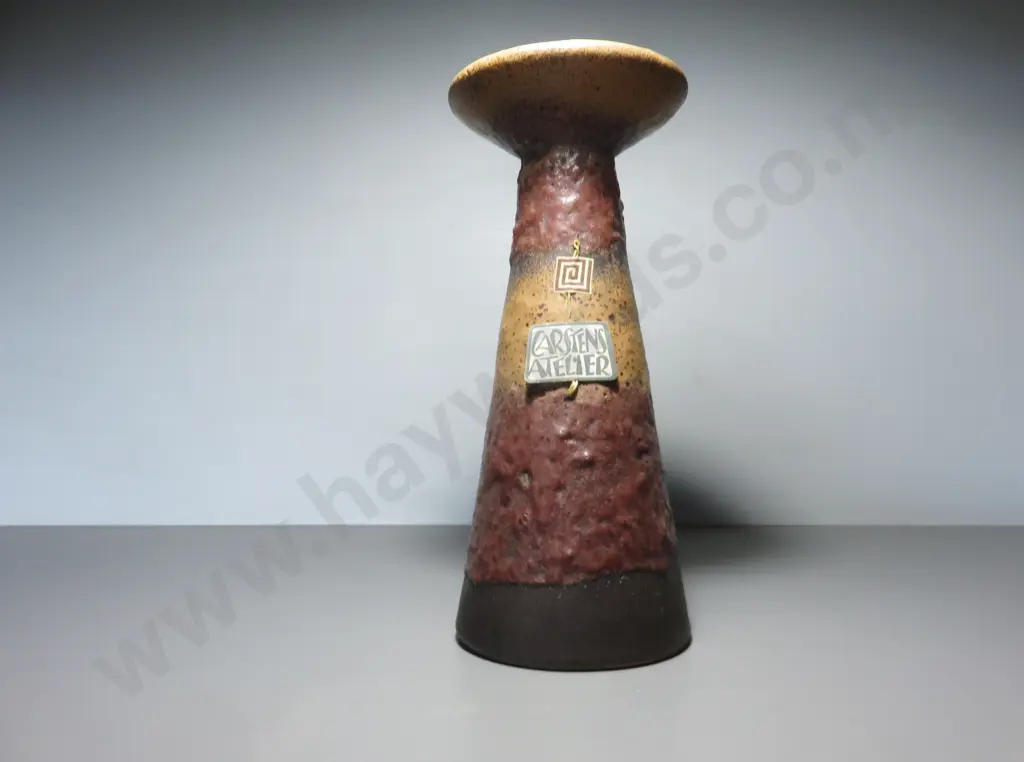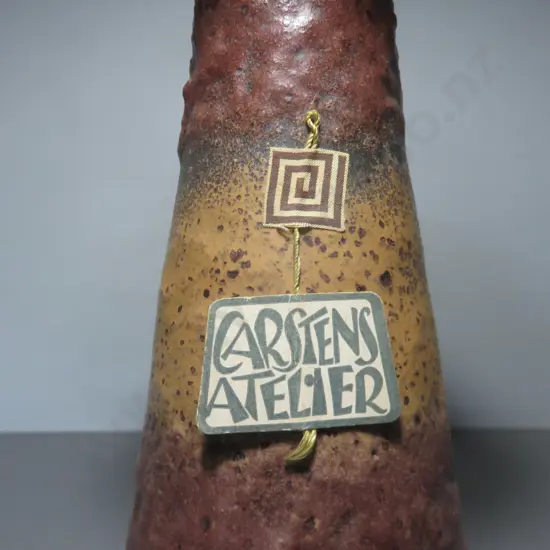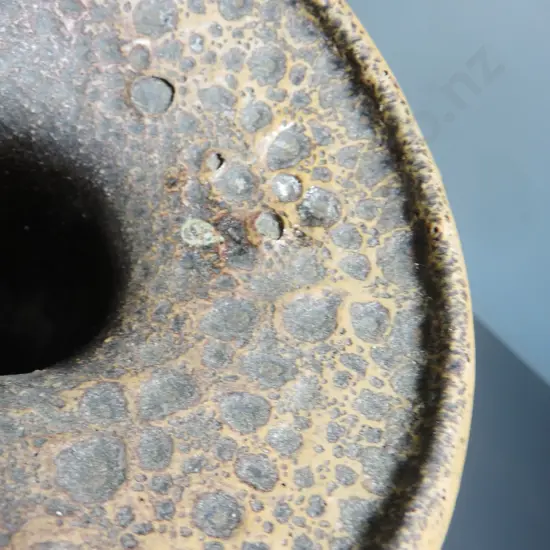Early to Mid 20th Century Decorative Arts Auction
Thursday, 5 - Thursday, 12 October 2023
Superb mid-century West German Carstens oversized chalice vase
Current Bid $60 (3 bids, reserve met)
This lot is now closed 12 Oct 7:54 PM (NZST)
Buyer premium and GST is additional to your bid.
All bids are subject to our buyer terms and conditions
Lot Details
Superb mid-century West German Carstens oversized chalice vase. Originating from the 1962 Artelier series. Finished in lovely earthy tones with full studio marks beneath. A particularly early example. Measuring 310mm high. Founded by brothers Christian and Ernst Carstens after they lost most of their factories to the DDR. The Carstens Uffrecht studio in East Germany became the manufacturer VEB Haldensleben. The Carstens Tonnieshof studio was located in Freden an der Leine (West Germany). During the 1960s Carstens expanded and products were produced in Austria, Chile, Argentina and Australia. Designers included Trude Carstens (wife of Ernst Carstens), Heinz Siery, Gerda Heuckeroth and Dieter Peter. The Atelier series was first introduced 1962. In the beginning it represented a limited high quality range but was later on used on more standard ceramics. The Atelier series label is known in three different versions and in at least two generations. The first generation is a square shaped label with the text "CARSTENS ATELIER". The font is inspired by the Jugend/Art Nouveau art style and the colour is off-white with brown text. This label came in two versions. One is a loose paper label attached with a thread to a small rectangular label with a geometric pattern. This label is very rare today, probably because people often removed the loose label from the ceramics in combination that it was only used on a limited number of ceramics. The other version is as an ordinary sticker. This label is more common and is often found on ceramics from the mid 60s/early 70s. It is probable that the loose paper label represent the first generation and the sticker a second generation.






